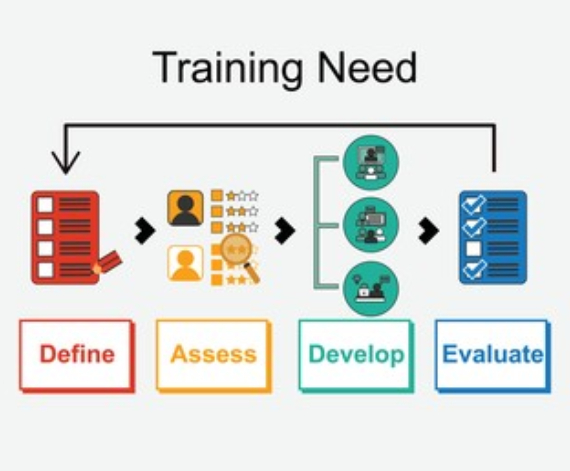Understanding Electrical Hazards

Best Practices for P&ID Development
December 31, 2024
Welding Safety: Essentials for Beginners & Advanced Training – The Safety Master
January 8, 2025Electrical hazards pose significant risks in many workplaces, leading to severe injuries or fatalities if not properly managed. Understanding these risks and implementing safety measures is crucial to ensuring a safe working environment. Furthermore, comprehensive electrical safety training is essential for protecting employees and reducing risks associated with electrical hazards.
Understanding Electrical Hazards: Common Risks and How to Avoid Them
Common Electrical Hazards
- Electric Shock: This occurs when a person comes into contact with an electrical energy source. Electric shock can cause muscle spasms, burns, cardiac arrest, or even death. It can happen due to faulty wiring, damaged equipment, or improper use of electrical devices.
- Electrical Burns: These are caused by high-energy arcs passing through the body or close to the skin, leading to severe injuries. Electrical burns often result from contact with live electrical components or short circuits.
- Arc Flash: An arc flash is a sudden release of electrical energy through the air when a high-voltage gap exists and a breakdown occurs. This can result in intense heat, light, and pressure waves, causing severe injuries or fatalities to those nearby.
- Fire: Electrical fires can occur due to overloaded circuits, faulty wiring, or malfunctioning electrical equipment. These fires can spread quickly and cause extensive damage.
- Explosions: Electrical explosions can occur in environments with flammable gases or vapors when electrical equipment sparks. This can lead to significant injuries and property damage.
How to Avoid Electrical Hazards
- Regular Inspections: Conduct regular inspections of electrical systems and equipment to identify and address potential hazards. Look for signs of wear and tear, damage, or improper installation.
- Proper Maintenance: Ensure that all electrical equipment and systems are properly maintained according to manufacturer guidelines and industry standards. Regular maintenance helps prevent malfunctions and potential hazards.
- Use of Personal Protective Equipment (PPE): Provide appropriate PPE such as insulated gloves, face shields, and flame-resistant clothing to employees working with or near electrical equipment.
- Safe Work Practices: Implement and enforce safe work practices, such as de-energizing equipment before maintenance, using lockout/tagout procedures, and maintaining a safe distance from live electrical parts.
- Training and Education: Provide comprehensive training to employees on electrical safety, hazard recognition, and safe work practices. Training should be ongoing and updated regularly to address new risks and technologies.
Importance of Electrical Safety Training: Protecting Employees and Reducing Risk
Protecting Employees
- Knowledge and Awareness: Electrical safety training equips employees with the knowledge and awareness needed to identify and avoid electrical hazards. Understanding the risks associated with electrical work helps employees take appropriate precautions.
- Safe Work Practices: Training programs emphasize the importance of safe work practices, such as using PPE, following proper procedures, and adhering to safety regulations. Employees learn how to perform tasks safely and minimize the risk of accidents.
- Emergency Response: Training includes information on how to respond to electrical emergencies, such as electric shocks, burns, or fires. Employees are trained to provide first aid and seek immediate medical assistance, which can save lives and reduce the severity of injuries.
- Confidence and Competence: Well-trained employees are more confident and competent in performing their tasks safely. This reduces the likelihood of mistakes that could lead to accidents and enhances overall workplace safety.
Reducing Risk
- Compliance with Regulations: Electrical safety training ensures that employees are aware of and comply with relevant safety regulations and standards. Compliance reduces the risk of legal penalties and enhances the organization’s safety culture.
- Preventing Accidents: Comprehensive training helps prevent accidents by teaching employees how to recognize hazards, use equipment properly, and follow safe procedures. Fewer accidents result in fewer injuries, fatalities, and associated costs.
- Improved Productivity: A safe work environment leads to improved productivity. Employees are more focused and efficient when they feel safe, and there are fewer disruptions caused by accidents or unsafe conditions.
- Protecting Equipment and Property: Proper training reduces the risk of damage to electrical equipment and property. Employees learn how to handle and maintain equipment correctly, preventing costly repairs and downtime.
- Positive Safety Culture: Investing in electrical safety training fosters a positive safety culture within the organization. Employees understand that their well-being is a priority, leading to increased morale and a commitment to safety practices.
In conclusion, understanding electrical hazards and implementing measures to avoid them is crucial for workplace safety. Equally important is providing comprehensive electrical safety training to protect employees and reduce risks. By prioritizing electrical safety, organizations can create a safer work environment, prevent accidents, and promote a culture of safety that benefits everyone involved.




